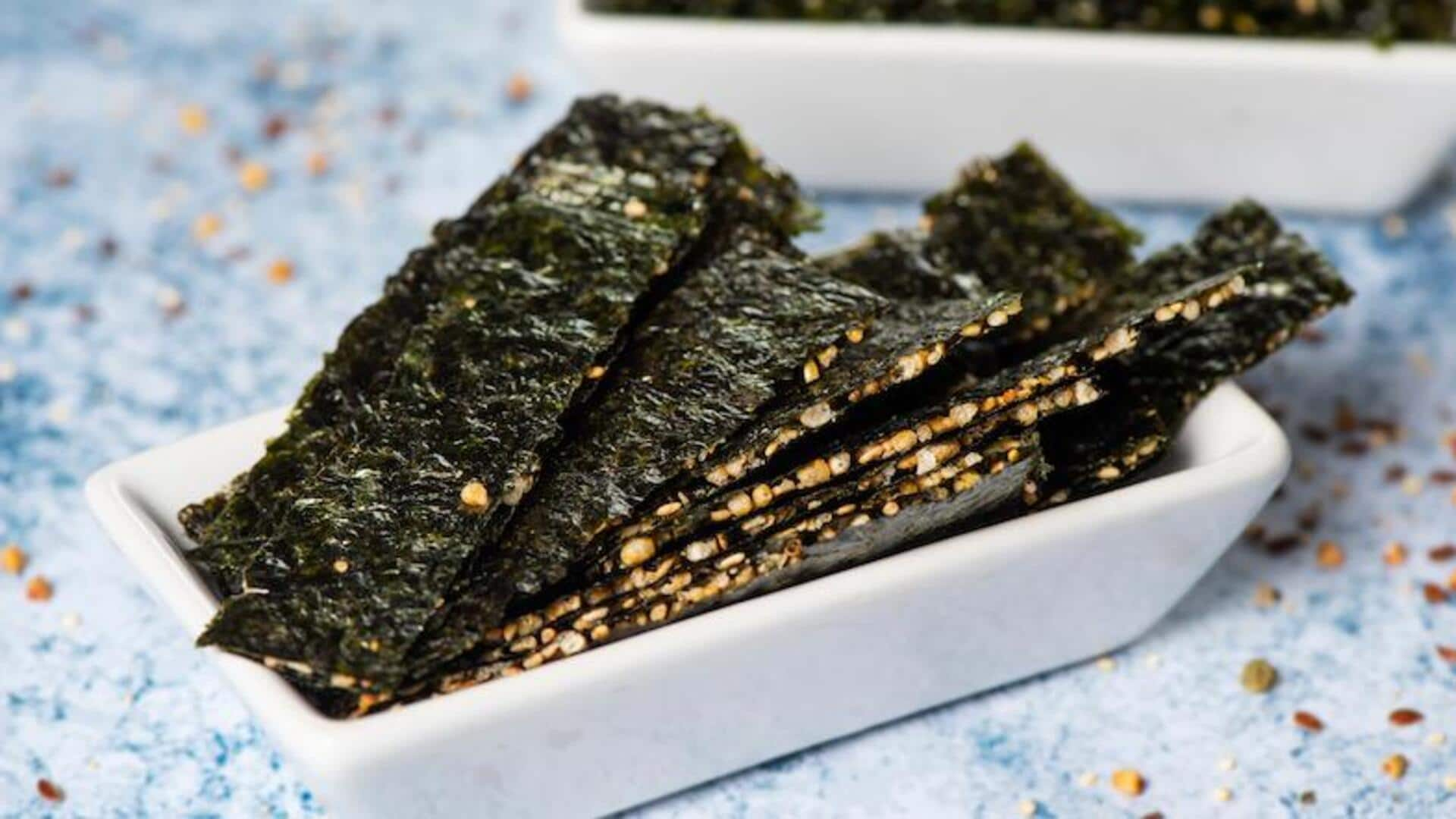
Skip the popcorn; instead eat roasted seaweed
What's the story
Popcorn has always been the ultimate favorite, especially during movie nights. However, roasted seaweed snacks are quickly becoming a popular alternative. They offer a unique taste along with a host of health benefits. They are low-cal and packed with essential nutrients such as iodine and vitamins A, C, and E. As more people look for healthier snack options, roasted seaweed is gaining popularity for its nutritional profile and versatility.
Health boost
Nutritional benefits of seaweed snacks
Roasted seaweed snacks are loaded with nutrients that can promote your overall well-being. They are rich in iodine, which promotes thyroid function, as well as vitamins A, C, and E that promote healthy skin and enhance the immune system. Plus, they are rich in fiber that promotes digestion. Given their low-calorie content as compared to regular popcorn, they make an ideal snack for weight-watchers.
Flavor variety
Versatility in flavors
One of the most appealing aspects of roasted seaweed snacks is the variety of flavors available. From classic salted versions to spicy or sesame-infused ones, there's something to suit every palate. This diversity allows consumers to enjoy different tastes without compromising on health benefits. The range of flavors makes it easy to incorporate these snacks into different meals or enjoy them on their own.
Budget-friendly choice
Cost-effective snacking option
Roasted seaweed snacks can also prove economical for those looking for affordable yet nutritious snacking options. Usually priced lower than many other health-focused snack alternatives (like nuts or specialty chips), they offer good value for money without compromising on quality or taste. This affordability makes them accessible to a large audience looking for healthier snacking habits.
Sustainable choice
Eco-friendly snack alternative
Choosing roasted seaweed over traditional popcorn can also benefit the environment. Seaweed farming uses up less resources than conventional agriculture techniques used to grow corn or other crops for snacks. It grows quickly without needing fertilizers or pesticides, while absorbing carbon dioxide from the air—making it an eco-friendly option to consider when picking your next snack choice.